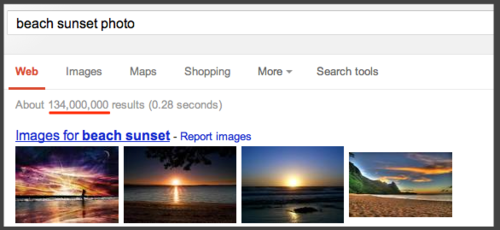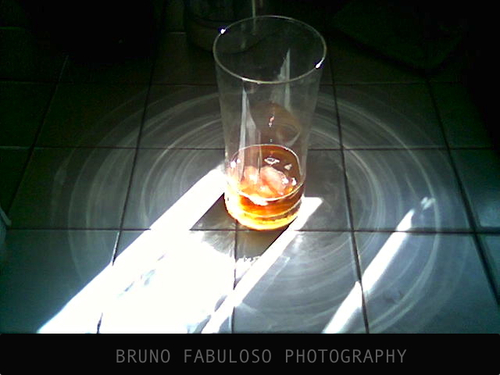Pixlr Editor: Why You Shouldn’t Watermark Your Photos (Plus a Template to Help You Do It)
It’s a simple enough question, and one we hear a lot: How can I watermark a photo? (You can use our Pixlr Editor Watermark Template, but before you do, consider reading further.)
Although there’s no sure-fire way to stop people from stealing your photography on the Internet (or words for that matter), it’s your prerogative if you want to include watermarks. But before you do, be aware that some people have strong feelings about this practice (maybe you do, too). At the risk of angering any hard-core watermarking enthusiasts, here are some of the hotly contested arguments for and against watermarking.
Watermarks ruin the viewing experience

There’s really no denying this is true. A picture that’s worth a thousand words can look downright cheap with “Copyright Claire Quilty” plastered on top of the most beautiful part of the image. Blech.
Watermarks make my photos look more professional. Right?
They may actually do the opposite. While they make you feel more professional, poorly conceived or designed watermarks can make you look like a total amateur. (Make sure you choose a classy font and not Comic Sans.) One thing’s for sure: Watermarks insert an extra layer of the commercial into your work, and it can be hard to know how people will react to that. If you’re comfortable with that, then you probably have no qualms about plastering your photos with watermarks. But how many people have you met who actually make money this way? More often than not, successful photographers find clients by referral, not by random searches on the Internet. That said, there’s no denying watermarks offer a way for you to brand your work if that’s important. But keep in mind that the most renowned photographers don’t seem to need watermarks; their style often speaks for itself.
Watermarks protect my images from being stolen
Maybe. Adding a watermark may dissuade lazy bloggers who are looking for a quick image, but a talented graphic design thief can remove most watermarks without much trouble. Heck, they could even place their own bogus watermark on a photo in a truly evil jujitsu move. (Didn’t see that coming, did ya?) The real question you have to ask yourself is how horrible will it be if your photo is shared without your permission — and how does that square with the goal of having your work seen.

It may sound depressing to hear it, but that beautiful photo of the sunset at the beach you took last summer is crowded out by about 134 million similar photos in Google Search. Unless you’re running a commercial stock photo agency, your images are lucky to be found, much less stolen. That said, watermarks do seem to stop casual browsers from borrowing. They keep honest people honest.
Watermarks are free advertising
True! Very true. However, it stands to reason that watermarked photos may be shared less frequently across social networks simply because real-life people are often hesitant to share something with prominent advertising, either out of fear of offending or because the branding ruins the visual effect of the photo. If you want your photos to go viral, watermarks won’t help. But the sharing that does get done is undeniably free advertising.
If you must watermark…
This is not an issue that has an easy answer. It’s really something everyone has to decide for themselves. While I consider watermarks annoying, I can’t deny that in some specific circumstances watermarking makes sense. If you feel like it’s important, here are a few tips that seem to reach the best middle ground of this contentious issue:
Make it as subtle as you can. And then a little more subtle.

Put a watermark in the bottom right-hand corner with a low opacity. If you consider your photos works of art, mark them in the way Picasso and other artists have always signed their work — somewhat unobtrusively.
Class it up with a nice font and put it outside the frame

Fashion photographers are a good model to follow here. You could place a strip at the bottom that brands your name in a very nice font but that keeps your brand outside the frame of the photo itself.
Just list your site URL

Nothing wrong with telling people where they can see more if they want — particularly if you actually display and sell your photos on your site. You can make the case for having people purchase photos directly on your site — but not in the photo itself. Don’t list a URL, a copyright symbol, your name, and the phrase “do not reproduce under penalty of law!” Too much = arrogance gone wild. Just list your URL. Nothing else.
Hide your logo
If you’re really clever, you can incorporate a logo into the photo somewhere where only you can find it (in the bark of a tree, graffiti on a building, hiding in a pattern). Doing this well takes time, and you should probably only do this if the art you’re creating is very unique (e.g., an illustration you created from scratch). Everyday photos? Not really worth it.
The lazy solution: Use this Pixlr template!

We’ve created a simple template for Pixlr if you want it. It’s a .pxd file, which is the native file format for Pixlr Editor. Just customize this template in Pixlr with your name or logo and save it to your Pixlr Library. It has a layer for a logo and a layer for text, and you can easily customize the text or hide what you don’t need. Pull this file up whenever you want to create a watermarked photo. I’ve deliberately made the canvas large so you can paste photos into it and crop out the extra bits, but the file itself is still pretty small (~50K). You can download this Pixlr Editor Watermark Template and start protecting your images.
Watermarking in Pixlr for mobile?
You can watermark in Pixlr for iOS and Android, too. You’ll need to put your logo on your phone and use the Double Exposure option (previously called Add an Image). Just resize the image to the size you want. If you want the logo to be very small, you might need to zoom in.
Bonus tip: thievery unveiled
Want to see if someone has “borrowed” a photo of yours? Try TinEye. It’s a free image recognition service that can show you where an image is being used on the Internet. It’s not completely comprehensive, but it’s effective and handy. They even have browser plug-ins you can use to right click on images you find online and see where else they’re being used. Or, try Google’s Image Search. You can enter the URL or upload your image to see where it’s been — or images that look similar to it.